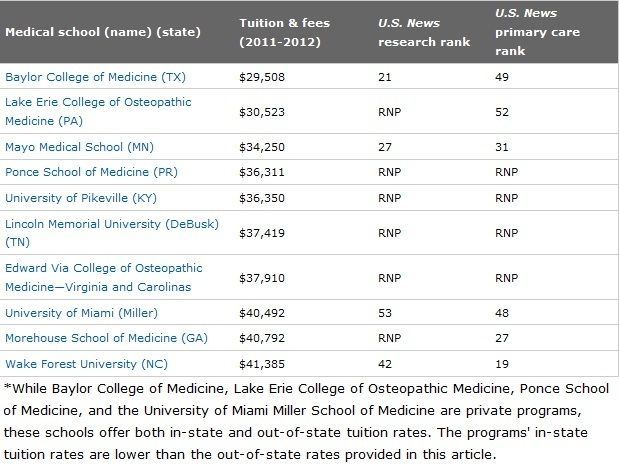- Revenue Cycle Management
- COVID-19
- Reimbursement
- Diabetes Awareness Month
- Risk Management
- Patient Retention
- Staffing
- Medical Economics® 100th Anniversary
- Coding and documentation
- Business of Endocrinology
- Telehealth
- Physicians Financial News
- Cybersecurity
- Cardiovascular Clinical Consult
- Locum Tenens, brought to you by LocumLife®
- Weight Management
- Business of Women's Health
- Practice Efficiency
- Finance and Wealth
- EHRs
- Remote Patient Monitoring
- Sponsored Webinars
- Medical Technology
- Billing and collections
- Acute Pain Management
- Exclusive Content
- Value-based Care
- Business of Pediatrics
- Concierge Medicine 2.0 by Castle Connolly Private Health Partners
- Practice Growth
- Concierge Medicine
- Business of Cardiology
- Implementing the Topcon Ocular Telehealth Platform
- Malpractice
- Influenza
- Sexual Health
- Chronic Conditions
- Technology
- Legal and Policy
- Money
- Opinion
- Vaccines
- Practice Management
- Patient Relations
- Careers
Wealth Protection Roadmap from Residency to Retirement
As part of a well-developed financial plan, a physician should make sure proper legal work is in place. Depending on where you are in your career, your plan may vary.

I have turned my column over to guest author and legal expert Robert Kaufer, JD. As part of a well-developed financial plan, a physician should make sure proper legal work is in place.
This is not my area of expertise, but I felt it was important information for my readers to have and brought in a practiced veteran in physician estate planning. I asked Robert to raise awareness on the overall topics out there. It’s important to note that while this is a good overview, this article in no way is exhaustive of the details.
Robert Kaufer, JD, writes:
As a physician, you are faced with many challenges not presented to the general public. They are good challenges to have but challenges nonetheless. They can be managed if you are aware of the risks, able to assess these risks and take the appropriate steps to mediate them.

Wealth protection is not about defrauding creditors but using common estate planning legal strategies to build walls of protection between you
and
unreasonable or deceptive creditors.
Most physicians who contact my law office are interested in this topic of wealth protection but are often unsure what it is. Due to our litigious society, all physicians, no matter what the risk of their specialty, should incorporate some form of asset protection strategies in their short- and long-term estate plans.
In planning for asset protection challenges, it is important to identify potential creditors. While these people can come from anywhere — a delivery person, the motorist next to you or, of course, a patient — you should also consider your work environment (employer/partners/employees) and the Internal Revenue Service as potential threats.
IRS
Not only are you taxed when you earn income, but if you have investments you pay a capital gains tax when you sell. If that is not bad enough when you die the IRS may be entitled to up to 45% of your estate. The IRS is most likely the biggest creditor you will face during your life and in death, but this amount can be mitigated or eliminated with the correct revocable and irrevocable trusts.
Work Environment
The biggest asset you have is your ability to earn. It makes sense to protect your salary and income through contract reviews, liability insurance, disability insurance, life insurance and other personal and business strategies.
A good plan will work to minimize all of these threats and allow you to sleep better at night.
In working with physicians over the last 19 years I have found the following guidelines helpful. These guidelines consist of Trusts (Revocable and Irrevocable), Contracts and Limited Liability Companies.
Please note they are general guidelines and each physician's situation may dictate otherwise.
Residency to starting year one of practice
During this time you are likely cash poor and debt rich. Your plan should take this into consideration with the triggers of marriage and/or children as a sign to begin this planning.
If either of these are present in your life you should implement a bare bones catastrophe plan. This plan consists of a basic Last Will and Testament with contingent trust provisions for children. It will not protect assets from creditors or eliminate the need for a probate upon death, but it will ensure your assets go to who you want and when (children receiving their inheritance at age 18). It will also allow you to name the guardian for any minor children.
The other important component of the plan at this juncture is the Employment Contract Review. You should understand what is in an employment contract, how to negotiate a provision out or in and how it stacks up against other physician contracts. Your ability to earn is your greatest asset and this review will go a long way to protecting it.
Year one to year five
This is the time period where you lay down your foundation for all future wealth protection. If you were diligent in your early planning, you already have the substantive information (guardians, trustees and children’s discretionary ages to receive inheritance) from your basic will. The planning now simply switches form from the Will to the Revocable Living Trust.
A Revocable Living Trust is a separate legal entity you create to own and manage your financial assets along with any real or personal property. It is mostly transparent to the outside world, but it does extend some asset protection (more than Wills) and if you properly fund it, your estate will stay out of court both in disability and death.
An Irrevocable Life Insurance Trust (ILIT) is used when you own term life insurance in amounts greater than $2 million. If you own it individually you create a potential estate tax problem. When you own it in an ILIT, the insurance is outside of your estate for tax purposes and protected from creditors of you, your spouse and children.
Year five to retirement
Prior to this time of your life wealth protection planning is fairly standard and should be utilized by all physicians. However, as your life and career matures your planning will be guided by your own risk/benefit analysis. How great is your perceived risk and what will the planning to mediate this risk cost in time, money and administration?
The main strategies at this level include irrevocable asset protection trusts along with asset protection limited liability companies.
Irrevocable Asset Protection Trusts are divided into two categories. Self Settled and Non-Self Settled.
Self Settled Irrevocable Trust (SSIT)
Created by you for yourself, SSITs are not common and only allowed by statute in a handful of states. The laws of each state will dictate the parameters of the trust including any look back period designed to prevent fraud. Also, the trust must be located within the state boundaries and have a resident trustee.
The setup and expenses of administration can be high and the use of this method needs to be analyzed taking your entire plan into consideration. This type of trust can be used by anyone but may be better suited if you live in one of the states that allow it.
Non-Self Settled Irrevocable Trust (NSSIT)
Also known as a gifting asset protection trust, an NSSIT differs in that someone else will set the trust up for you. This person can be a parent, sibling or friend with the trust’s funding coming through gifts from you to them to the trust. Care needs to be taken in this process for it to withstand challenge in the future. There are no state boundary restrictions for this type of trust and can be used anywhere.
The final asset protection tool is a Limited Liability Company. Like a trust it is a separate legal entity created and designed to own your assets for your benefit. It is governed by business, not trust, law and therefore can have different benefits and protections. It becomes an Asset Protection Limited Liability Company with the correct language in the operating agreement and ownership structure.
The key to all asset protection is time. Time can either be your greatest ally or your biggest enemy. If you wait too long, any strategy you employ may blow up on you.
THIS ARTICLE DOES NOT PROVIDE LEGAL ADVICE NOR CREATE AN ATTORNEY CLIENT RELATIONSHIP BETWEEN YOU AND ITS AUTHOR.
Jon C. Ylinen and Physician’s Money Digest are not responsible for the content written in this article and do not provide legal advice.
It has been prepared by Robert Kaufer of Kaufer Law Firm, LLC for informational purposes only and is for your general education. It cannot replace a relationship that you have with an attorney. Your use of the information does not create an attorney-client or any other contractual relationship between you and Robert Kaufer of the Kaufer Law Firm, LLC.
Robert Kaufer has been practicing Wealth Protection/Estate Planning & contract review law for Physicians since 1993. His practice includes various types of revocable and irrevocable trusts, physician contract reviews and various other business law matters.
He received his bachelor’s degree in education from the University of Wisconsin at River falls, his Juris Doctorate (JD) from the University of Hamline School of law and a Master of Business Administration (MBA) from the University of St. Thomas. Robert is licensed to practice law in numerous states and works virtually with physicians nationwide. In 2010 he published his book Real Life Legal Planning - Residency to Retirement.
Jon C. Ylinen is a Financial Advisor with North Star Resource Group and offers securities and investment advisory services through CRI Securities, LLC. and Securian Financial Services, Inc., members FINRA/SIPC. CRI Securities, LLC. is affiliated with Securian Financial Services, Inc. and North Star Resource Group. North Star Resource group is not affiliated with Securian Financial Services, Inc. The answers provided are general in nature and are not intended to be specific recommendations. Please consult a financial professional for specific advice in relation to your individual circumstances. This should not be considered as tax or legal advice. Please consult a tax or legal professional for information regarding your specific situation.
